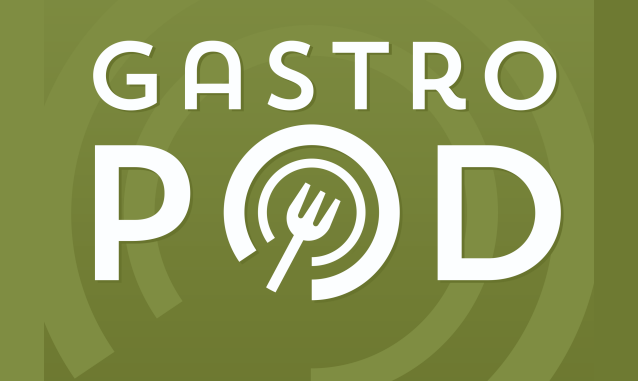The earliest humans favored juicy meaty mammoth at mealtimes Ancient Romans loved their favorite herb silphium so much that they sprinkled it on everything from lamb to melon In the 19th century United States passenger pigeon pie was a cherished comfort food long before chicken pot pie became commonplace And for dessert Americans a century ago might have enjoyed a superlatively buttery Ansault pear reckoned to be the greatest pear ever grown What did these foods beloved by previous generations taste like Well apart from some written descriptions we ll never know they re all extinct Join us this episode as culinary geographer Lenore Newman takes us on a tour of lost foods and the lessons they can teach us as we fight to save our current favorite foods from disappearing forever Shooting wild pigeons in Iowa illustration from the 2 July 1867 edition of Frank Leslie s Illustrated Newspaper vol XXV no 625 p 8 from Large-scale live capture of Passenger Pigeons Ectopistes migratorius for sporting purposes Overlooked illustrated documentation by Julian Hume This project started because of a bird Lenore Newman told Gastropod And that bird was Martha Newman s project is a new book titled Lost Feast Culinary Extinction and the Future of Food Martha was a passenger pigeon and the last living member of her species an endling as such lonely creatures are evocatively called Her death on September 1st 1914 represented the first time that humanity watched a species disappear in full awareness of the concept of extinction and our role in causing this particular one There was no denying it was us said Newman somehow together we had eaten so many pigeons that we had wiped the most abundant bird in North America off the face of the planet But the passenger pigeon wasn t our first culinary extinction This episode Newman takes us on a tour through the foods we have eaten to their end such as the Pleistocene megafauna which early humans destroyed as our numbers spread around the world and the leek-flavored silphium that was so valuable its last stalks were hoarded alongside gold and jewels by Roman emperors In each case we sift through the evidence that points to human appetite as the leading cause of extinction and unpack the response of a bewildered bereft humanity Gold coin from Cyrene from between 308-250 BC the tails side depicts silphium The Romans clung to the belief that their beloved silphium could perhaps spontaneous reappear someday the idea that that something could be gone forever was simply at the time inconceivable The concept of extinction along with its mirror evolution wasn t formulated until the end of the eighteenth century and it finally gave humans a framework within which to understand their actions But as Newman describes the pace of culinary extinctions has only increased since then with thousands and thousands of varieties of plants and breeds of animals vanishing in the early 20th century Why have we allowed so many of the foods we love to vanish What impact has their loss had and what lessons can it teach us for the future Listen in this episode as Newman helps us tackle these morbid questions leaving us with some hope as well as a whole new perspective on chicken Episode NotesLenore Newman s Lost Feast Lenore Newman holds a Canada Research Chair in Food Security and Environment at the University of the Fraser Valley where she is currently an associate professor of geography and the environment Her most recent book is Lost Feast Culinary Extinction and the Future of Food prior to that she authored Speaking in Cod Tongues A Canadian Culinary Journey The Ansault pear painted by Deborah G Passmore on 10 13 1897 from the collection of the USDA National Agricultural Library in Beltsville Maryland The post Of Ghost Foods and Culinary Extinction appeared first on Gastropod See omnystudio com policies listener for privacy information Click here to visit this podcast episode

Listen to our podcast on podcasting success!


- With Jeremy Fisher From This Is A Voice Podcast | S3 E19
- Fortune Cookie Readings For The 20 Most Active Podcasters On The World Podcast Network!!! S3 E18
- The RIGHT Social Network For Your Podcast | S3 E17
- Does Your Podcast Have TOO Many Guests With Shari Post? S3 E16
- How Podcasters Can Succeed By Following Hulu's Strategy | S3 E15
- Guest Jodi Krangle Of The Audio Branding Podcast And The Podsafe Music Of Jess King | S3 E14 | Become A Successful Podcaster
- Podcast Guest Steve Guttman And The Podsafe Music Of Zaneta Z
- Podcaster Journey With Rapper And Podcaster Pryme Minister
- S3 E11: Dissecting Cast Magic's Output With Guest Greg Wasserman
- S3 E10 Successful Podcasters: Reena Friedman Watts Of The Better Call Daddy Podcast
- S3 E9 Why Podcasters Need Canva For Podcast Marketing
- S3 E8 How Does AI Define Podcasting And What Equipment Does AI Think You Need To Podcast?
- S3 E7 - Why Your Podcast Is Not Growing Fast Enough
- S3E6 - Podsafe Music 4th Of July With Shari
- S3 E5 - Does Your Podcast Need A Script?
- S3 E4 - Is SoundCloud Really A Good Platform For Podcasts? Should You Be On It?
- S3 E3 - How To Make Good Money Playing Podsafe Music On Your Podcast
- S3 E2 - Jay Fairbrother - Mastermind Groups For Podcasters Featuring The Music Of Lian Gold
- Why Are There So Many Podcasters Today? The Competition Out There And How To Survive. | S3 E1
- Meet Podcast Guest JoshPele Magic - Available Now As A Guest For All Podcasts | S2 E29
- Season 2 Bloopers, Funny Moments, & Inspiration Moments In 2022 With Co-Hosts And Guests
- What Are YOUR 2023 Goals For Your Podcast? Here Are Mine... | S2 E28
- The Reasons Your Podcast Needs A Holiday Episode | S2E27
- S2 E26 - Dave Jackson From The School Of Podcasting Tells What A Good Podcast Is
- S2E25 - Quora Marketing Basics For Your Podcast
- S2E24 - 7 Reasons Why There Are So Many Podcasters And How To Compete
- S2E23 - Secrets To Getting More Podcast Downloads
- S2E21 - 10 Ways To Make Your Podcast Episodes More Exciting For Your Audience
- S2E20 - Response To 2018 Episode On Podcast Network On School Of Podcasting
- S2 E19 I Listened To 1000 Podcast Episodes (Part 2) Here Is What The Most Successful Ones Do.
- S2 E18 - What Inspired YOU To Become A Podcaster?
- S2E17 - 7 Cool Ways To Make Your Audience Come Back Every Episode
- S2E16 - 3 Surprising Ways A Blog Will Grow Your Audience FAST!
- S2E15 - Simple 3-Part Marketing Strategy For Any Podcast
- S2E14 - Take Your Audience Along On The Date
- S2E13 Is Your Podcast More Successful With Seasons, Or NO Seasons?
- S2E12 - The Fastest Way To LAUNCH Your Podcast
- S2E11 - The FASTEST Way To Edit Your Podcast
- S2E10 -How To Get High Google Rankings For Your Podcast
- S2E9 - Would Elon Musk Invest In YOUR Podcast?
- S2E8 - The Most Sought Out Podcast Categories Summer 2022
- S2E7 - How To Improve Your Podcast By Listening To Others
- S2E5 - Fresh Music Series With Hugh Macdonald & Holland Nelson And Melo Mafioso
- S2E4 - Fastest Way To Make Money Summer 2022
- S2 E3 - Monthly Podsafe Music Show For Your Podcast - 5 Songs From Singer/Songwriter Doug Cash
- S2 E2 - Monthly Podsafe Music Show With Doug Cash, Winchester 7, And Bruce Chamoff
- S2E1 - Monthly Music Show With Winchester 7 And The Runners
- EP51 - The Right Way To List Your Podcast Guests
- EP50 - Running Out Of Episode Ideas? How To Brainstorm Fast!
- EP49 - How To Become An Influencer Through Your Podcast
- EP48 - Vik Rajan Of PhoneBlogger.net And Https://videosocials.net/
- E47: Rob Intellisano Of The Amazon Hit Gravesend
- EP46 - How To Build A Podcast Community With Adrian Miller
- EP45 - Easy & Fun Podcast Editing Tips W/Professional Podcast Editor Merrill Loechner
- EP44 - Marketing Your Show On LinkedIn With Marc Halpert
- EP43 - Benefits Of A Podcast Network With Guest Rich Butler
- E42 - What Makes You Successful With Guest Tim B
- EP41 - The Best Instagram Hashtags For Podcasts
- E40 - More Benefits Of Podcasters Blogging W/ The Delaware Blogger Guest Antionette Blake
- EP39 - Why Podcasters Need A Mobile App With Guest John Lee
- E38 What Makes YOUR Podcast Successful With Guest Frank Sasso
- E37 - Facebook/Instagram Down? What Affected Podcasters Can Do.
- E36 - How To Make Single-Host Podcasts Work
- E34 Q&A With Professor Pete Alexander: My Audience Has Dropped! Now What?
- E33: Upcoming Episodes For September And October 2021
- E32 Blogging For Podcasters - The Process
- E31 Why Blogs Make Your Podcast MORE Successful
- E30 The POWER Of Your Podcast's RSS Feed (Video)
- E29 - Subscribe To Your Podcast Competition?
- E28 PodcasterLinks.com And MediaGirlNetwork.com
- E27 Successfully Podcasting With Your Smart Phone
- Daily Podcast Success Update For 9/2/2021
- E26 Best Time To Monetize Your Podcast
- E25 Can You Podcast From The Airport? From Las Vegas...
- E24 Treat Your Podcast Like A Lobster Roll
- E22 Do Guests Really Enhance Your Show?
- Daily Success Update:Education Podcasts Wed, Aug 11, 2021
- E21 Connecting With Your Podcast Audience To Grow Faster
- Daily Success Briefing Fri, Aug 8, 2021
- E20 Search Engine Optimization Strategies For Your Podcast
- E19 Podcasting During The Delta Variant Of Covid19
- E17 How To Beat The Competition On Apple Podcasts
- E16 Rapid Podcast Editing & Avoiding Pod Fade
- E14 Dual Podcast With Guest Podcaster Antionette Blake Part 2
- E13 Dual Podcast With Guest Podcaster Antionette Blake Part 1
- E12 How To Get More Engagement For Your Podcast Episodes With Guest Interviews
- E11 My Special Guests: Jeff And Jim Wood Of SwimAble
- E10 Surprise Visit To Philadelphia And Atlantic City
- E9: Special Guest Dominique Carson Journalist & Certified Massage Therapist
- E8: 8 Fun Audacity Effects For Podcasters
- PodKnow 2021 Online Podcasting Event With Conference Speaker: Merrill Loechner
- E5: I Listened To Over 1,000 Podcast Episodes And Here Is What I Found The Best Ones Do.
- E4 - Buzzsprout Was Down On Sunday, Feb 21, 2021. What That Means For YOUR Podcast. My Reaction...
- E3: Five Things To Do Right Now To Grow Your Podcast Audience Fast.
- E2 - Should Podcasts Have Beautifully Produced Introductions With Voiceover And Background Music (and What Your Audience Thinks Of It)
- E1 - Become A Successful Podcaster - Keep Listeners On Your Podcast Episodes Longer
- Become A Successful Podcaster With Bruce Chamoff - Audience Growth, Monetization, Marketing & More! (Trailer)

